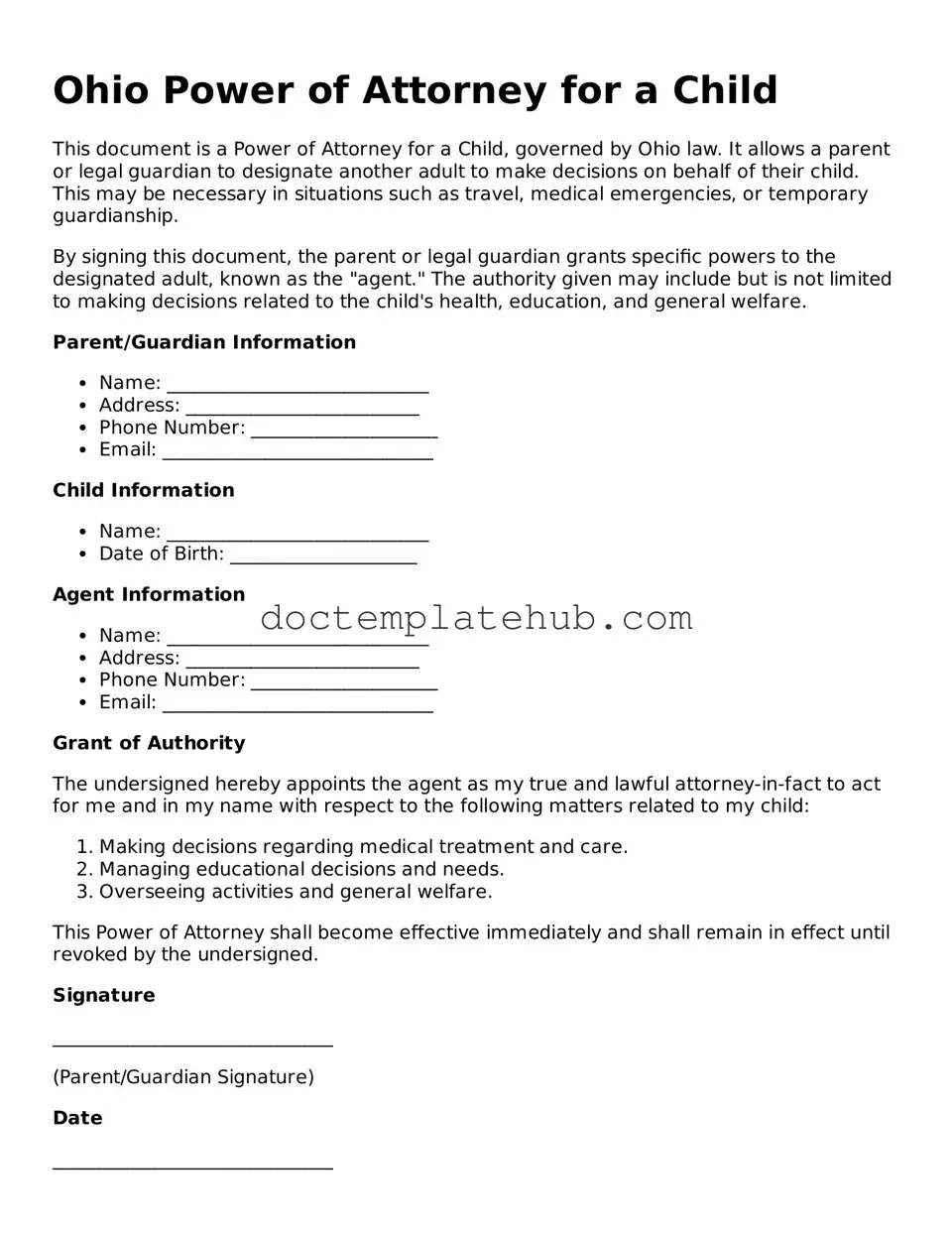What is a Power of Attorney for a Child in Ohio?
A Power of Attorney for a Child in Ohio is a legal document that allows a parent or legal guardian to grant another adult the authority to make decisions on behalf of their child. This can include decisions related to health care, education, and general welfare when the parent or guardian is unavailable or unable to do so.
Who can be designated as an agent in the Power of Attorney for a Child?
Any responsible adult can be designated as an agent in the Power of Attorney for a Child. This can include relatives, family friends, or trusted individuals. It is important to choose someone who will act in the best interest of the child and who the parent or guardian trusts completely.
How long is the Power of Attorney for a Child valid?
The Power of Attorney for a Child remains valid until the parent or guardian revokes it, the child reaches the age of 18, or the specified duration in the document expires. Parents should regularly review the document to ensure it meets their current needs.
Do I need to have the Power of Attorney for a Child notarized?
Yes, the Power of Attorney for a Child must be signed in the presence of a notary public to be considered valid in Ohio. This helps verify the identities of the parties involved and ensures the document is legally binding.
Can the Power of Attorney for a Child be revoked?
Yes, a parent or legal guardian can revoke the Power of Attorney for a Child at any time. To do this, a written notice of revocation should be provided to the designated agent and, if possible, to any institutions or individuals who were aware of the Power of Attorney.
What decisions can the agent make under the Power of Attorney for a Child?
The agent can make a variety of decisions, including those related to medical care, education, and general welfare. However, the specific powers granted should be clearly outlined in the document. Parents can limit or expand the agent's authority as needed.
Is there a fee for creating a Power of Attorney for a Child?
While there may be fees associated with notarizing the document, creating a Power of Attorney for a Child itself typically does not have a set fee. Some legal professionals may charge for assistance in drafting the document, so it is wise to inquire about costs upfront.
Where can I obtain a Power of Attorney for a Child form?
Power of Attorney for a Child forms can often be obtained from legal websites, local courts, or family law offices. It is important to ensure that the form used complies with Ohio law and meets the specific needs of the situation.
